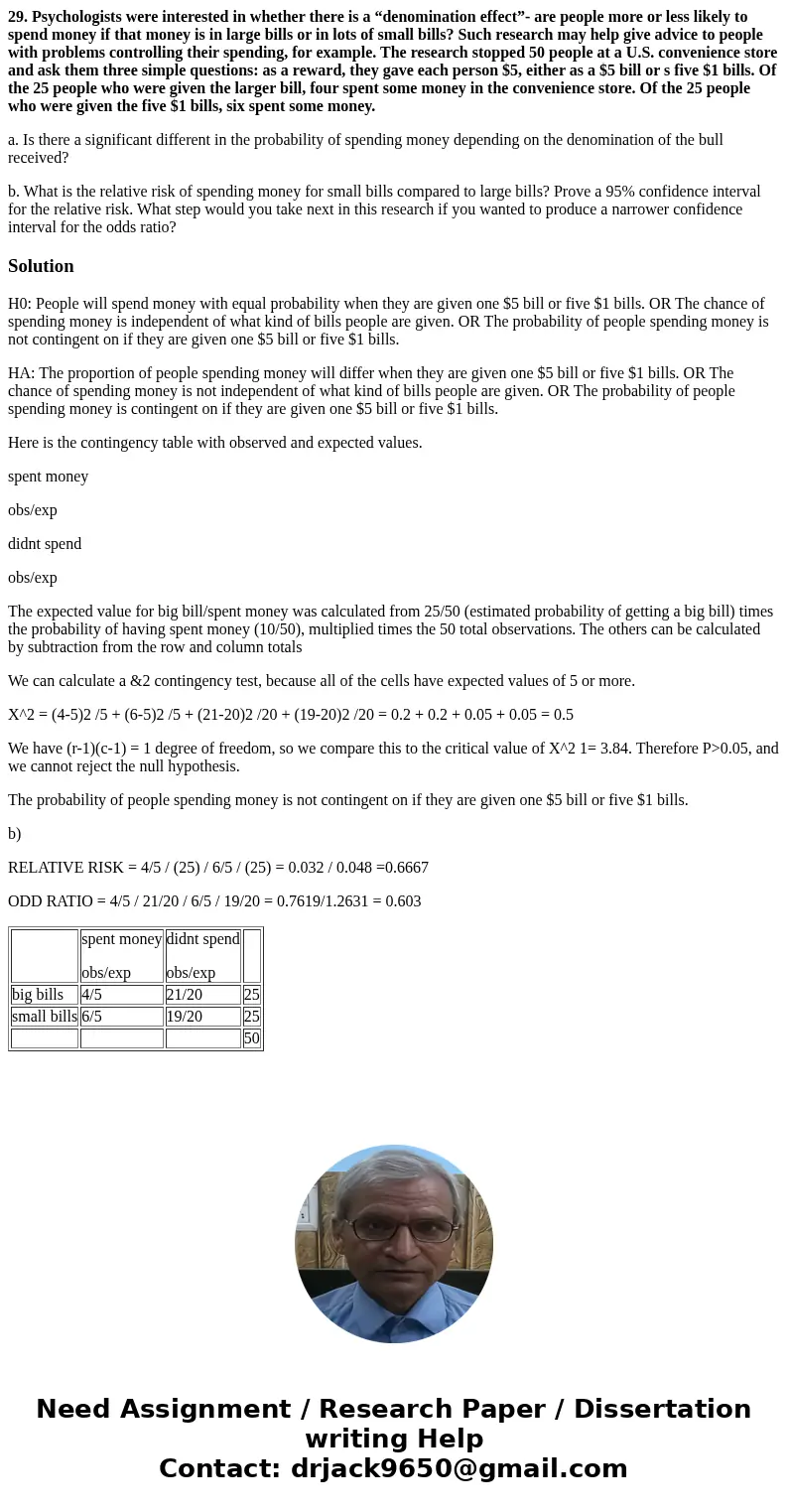29 Psychologists were interested in whether there is a denom
29. Psychologists were interested in whether there is a “denomination effect”- are people more or less likely to spend money if that money is in large bills or in lots of small bills? Such research may help give advice to people with problems controlling their spending, for example. The research stopped 50 people at a U.S. convenience store and ask them three simple questions: as a reward, they gave each person $5, either as a $5 bill or s five $1 bills. Of the 25 people who were given the larger bill, four spent some money in the convenience store. Of the 25 people who were given the five $1 bills, six spent some money.
a. Is there a significant different in the probability of spending money depending on the denomination of the bull received?
b. What is the relative risk of spending money for small bills compared to large bills? Prove a 95% confidence interval for the relative risk. What step would you take next in this research if you wanted to produce a narrower confidence interval for the odds ratio?
Solution
H0: People will spend money with equal probability when they are given one $5 bill or five $1 bills. OR The chance of spending money is independent of what kind of bills people are given. OR The probability of people spending money is not contingent on if they are given one $5 bill or five $1 bills.
HA: The proportion of people spending money will differ when they are given one $5 bill or five $1 bills. OR The chance of spending money is not independent of what kind of bills people are given. OR The probability of people spending money is contingent on if they are given one $5 bill or five $1 bills.
Here is the contingency table with observed and expected values.
spent money
obs/exp
didnt spend
obs/exp
The expected value for big bill/spent money was calculated from 25/50 (estimated probability of getting a big bill) times the probability of having spent money (10/50), multiplied times the 50 total observations. The others can be calculated by subtraction from the row and column totals
We can calculate a &2 contingency test, because all of the cells have expected values of 5 or more.
X^2 = (4-5)2 /5 + (6-5)2 /5 + (21-20)2 /20 + (19-20)2 /20 = 0.2 + 0.2 + 0.05 + 0.05 = 0.5
We have (r-1)(c-1) = 1 degree of freedom, so we compare this to the critical value of X^2 1= 3.84. Therefore P>0.05, and we cannot reject the null hypothesis.
The probability of people spending money is not contingent on if they are given one $5 bill or five $1 bills.
b)
RELATIVE RISK = 4/5 / (25) / 6/5 / (25) = 0.032 / 0.048 =0.6667
ODD RATIO = 4/5 / 21/20 / 6/5 / 19/20 = 0.7619/1.2631 = 0.603
| spent money obs/exp | didnt spend obs/exp | ||
| big bills | 4/5 | 21/20 | 25 |
| small bills | 6/5 | 19/20 | 25 |
| 50 |

 Homework Sourse
Homework Sourse